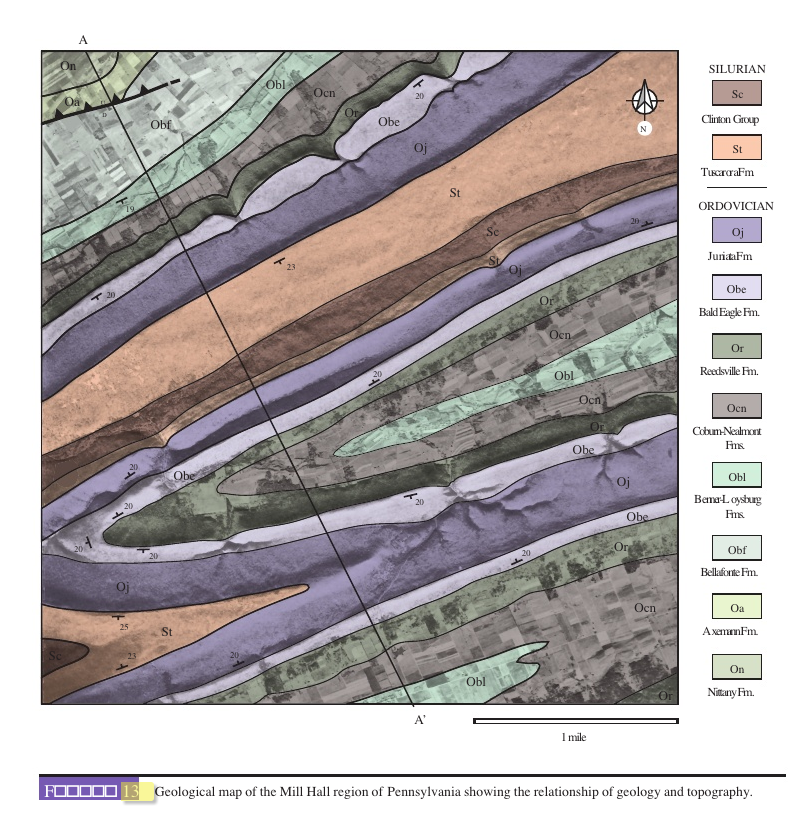Geological cross section draw geology perpendicular general line foliation bedding orientation fabric always choose
Table of Contents
Table of Contents
Have you ever wondered what lies beneath the earth’s surface? Do you want to explore the geology of an area but don’t know where to start? Drawing a geological cross section can give you a glimpse into the fascinating world of rocks and minerals hidden beneath our feet.
Many people struggle with the process of how to draw a geological cross section. They may not know where to begin or what tools they need. Others may find it difficult to interpret the data they have collected and turn it into a meaningful representation. However, with a little guidance and practice, anyone can learn how to draw a geological cross section.
The first step in drawing a geological cross section is to gather your data. This may include information from geological maps, satellite imagery, or your own field observations. Once you have your data, you will need to determine the orientation of the rocks and the scale at which you want to represent them.
Next, you can begin to draw your cross section. You may choose to use software such as AutoCAD or ArcGIS to create a digital representation of your cross section, or you may prefer to sketch it by hand on graph paper. Whichever method you choose, it is important to accurately represent the geology of the area you are studying.
My Experience with Drawing Geological Cross Sections
When I was studying geology in college, I found drawing geological cross sections to be both challenging and rewarding. At first, I struggled with the technical aspects of creating a cross section, such as determining the appropriate scale and accurately representing the orientation of the rocks. However, with practice and guidance from my professors, I became more confident in my abilities.
One thing I learned from drawing geological cross sections is that it can be a highly creative process. As I worked on my cross sections, I was able to visualize the geology in three dimensions and make connections between different geological features. It was like putting together a puzzle, where each piece provides a new clue to the overall picture.
Tips for Drawing Geological Cross Sections
Here are some tips for drawing geological cross sections:
Use a scale
It is important to accurately represent the size of the geological features you are studying. Using a scale can help you do this. Choose a scale that allows you to clearly see the features you are interested in, without making the cross section too large or unwieldy.
Include key geological features
When drawing a cross section, it is important to include key geological features such as faults, folds, and horizontal layers. These features can help you understand the geological history of the area you are studying.
Conclusion of How to Draw a Geological Cross Section
Drawing a geological cross section can be a challenging but rewarding process. By gathering accurate data, choosing an appropriate scale, and including key geological features, you can create a meaningful representation of the geology of an area. Whether you are a student of geology or a professional in the field, learning how to draw a geological cross section is an essential skill for understanding the earth’s surface and subsurface.
Question and Answer
What tools do I need to draw a geological cross section?
You may choose to use software such as AutoCAD or ArcGIS or sketch it by hand on graph paper. Whichever method you choose, it is important to accurately represent the geology of the area you are studying.
Can I create an accurate cross section without field observations?
No. Field observations are essential for creating an accurate cross section. Without field observations, you may miss important geological features or misinterpret the data you have collected.
How can I determine the orientation of the rocks?
You can determine the orientation of the rocks by observing the way they are tilted or folded. You can also use tools such as a compass or clinometer to measure the angle of the rocks.
What is the purpose of creating a geological cross section?
The purpose of creating a geological cross section is to visualize the geology of an area in three dimensions. This can help you understand the geological history of the area and make connections between different geological features.
Gallery
Draw A Geologic Cross Section On The Topographic | Chegg.com

Photo Credit by: bing.com / cross section geologic geology draw topographic figure profile map strike chegg along solved representing been layers pennsylvania topography line
The CGS Field School: How To Draw A Geological Cross Section

Photo Credit by: bing.com / geological cross section draw geology perpendicular general line foliation bedding orientation fabric always choose
Geologic Cross Sections - YouTube

Photo Credit by: bing.com / geologic sections
The CGS Field School: How To Draw A Geological Cross Section

Photo Credit by: bing.com / geological section cross draw contour geology extrapolate onto profile polygons faults structural axes fold outline lines such
Solved GeologyDraw A Geological Cross Section Along The Line | Chegg.com
Photo Credit by: bing.com / cross geological section along draw geology line






